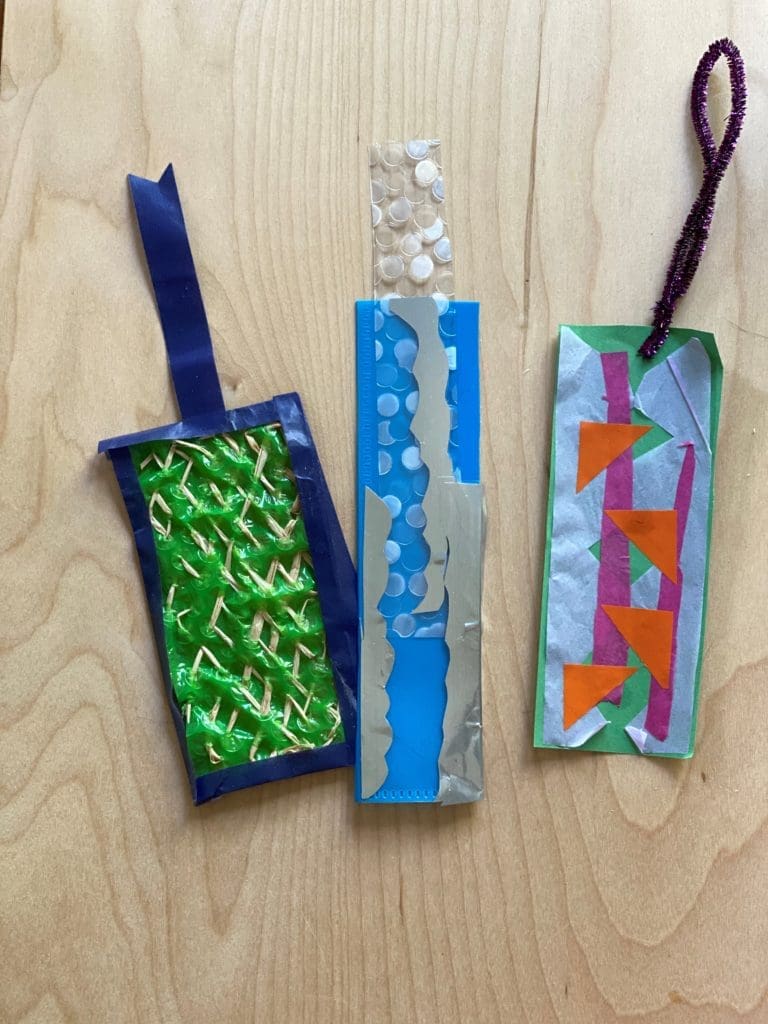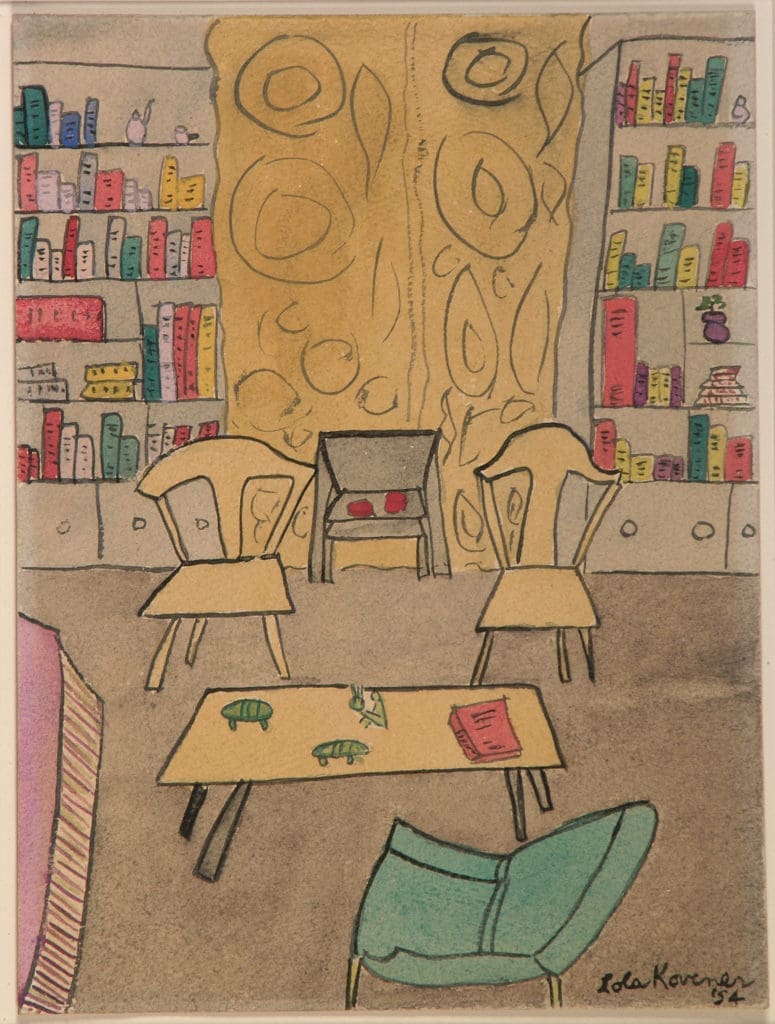Try your hand at making simple books and book-related objects. This month we have bookmaking tutorials plus some options for turning out artful bookmarks.
Get Art: Why make your own sketchbook?
Before we get to making, we might tackle the big question of the month.
Project 1: Make an Accordion Book
What do you need? Paper
Try this? Fold your paper in even sections. That’s it. This is a simple book to make.
Collection Connection:

Animal Locomotion, Plate 335, 1887. Gift of John Coplans 1979.12 d
Muybridge was a photographer who explore motion by creating a series of compositions from photographs taken in a burst, a bit like the feature on smartphones. Accordion books are a great tool to show a series of scenes. Try making your action packed story with your accordion book.
Project 2: Portfolio stitch
Handbound books can be simple portfolio stitch.
What do you need? Paper, a need, thread
Try this? This project is easy to do.

Collection Connection:

Andy Warhol is best known for his large-scale screenprints, but he worked in many media. Photography and filmmaking were also important tools for Warhol. This small comb bound album houses 20 Polaroids. This instant form of photography is as immediate and exciting now as it was during Warhol’s time. If you have an instant film camera, small handmade books are perfect for albums, as you can custom measure them. If not, consider drawing pictures to fill your album.
Project 3: Make a Bound Sketchbook
An old folder, some paper, a scrap of fabric, and yarn can be turned into a book in a breeze. This PDF offers step by step instructions.
Books can be made simply with tools you have around the house. Fold a few sheets of paper in half. Cut a folder to the same size to serve as the cover. Poke holes with a needle or toothpicks. Sew the book together, starting with the center hole. You might need to watch the video a couple times or refer to the diagram online. After you tie off the yarn, your book is finished. But, gluing on fabric to the cover makes a nice extra touch. After that, your book is done.
What do you need? Paper, yarn or string, a folder, a glue stick, a needle, and fabric
Try this? Once your book is done, you can choose to draw what you want. You can turn the book into a journal of your life, a chance to practice your drawing skills, or a place for your secrets. How will you use your book?
Collection Connection:

Drawing in sketchbooks is an important way aritsts work through ideas. Keeping a sketchbook with you at all times gives you the tools to draw whenever you see something interesting.
Artists, like William Sommer, often draw all the time. Like most things, practice is essential to perfect your craft. Sommer’s drawing shows his own son engaged with a sketchbook.
- If you use your book to draw everyday scenes, what moments would you capture?
- Sommers often used bright and pastel colors. How would you describe his colors and brushstrokes?
- If Sommers is drawing his son, what is his son sketching?
Beautiful Bookmarks
Beauty is it’s own reward, and art doesn’t have to be anything. However, sometimes making useful art feels good.
Bookmarks can be made from simple craft materials. Using a lovely bookmark can make the art of reading feel more special.
What do you need? There are infinite ways to make bookmarks.
- Bubblewrap embroidered with raffia
- Fabric or contact paper corners
- Scraps of file folders decorated with contact paper
- Strips of old artworks
Try this?

What are other ways you can turn supplies into lovely bookmarks?
Collections Connection:

Sam Gillam’s A Fog in the Hollow, 1974 features layers of color screenprinted onto paper. You can create a similar textured composition with bubble wrap as an easy project. It would also make a wonderful bookmark. Explore last month’s projects for possible sources for bookmark making inspiration.
Make a Zine
Need a quick way to creatively get out your stay-at-home stresses? A new style of sending a message to a friend? A fun approach for adults and kids alike to make a mini-story? Try making a zine!
Zines, short for magazines, are self-published, easy-to-make projects that have zero-to-no stipulations. Zines used to be created as a way for science fiction fans to add onto their favorite narratives, often through cutting and pasting paper together to form a small book or issue. Now, zines can be found as more formal, published material, often produced by a master printer.
What do you need? Using one piece of standard size paper, make an 8-page zine and get started with your own narrative!
8.5×11 inch paper
Scissors
Try This:
Ready?
Hot dog fold
Open up fold
Now, hamburger fold
Open fold, and turn paper
Fold bottom half up to the hamburger fold’s crease
Fold top half to meet bottom half at hamburger fold
Open up folds
(Can you see the 8 pages?)
Turn paper, and hamburger fold, again!
Use scissors to cut along this center crease to the center point
(This cut will allow the paper to fold into a zine)
Open paper
Hot dog fold, but prop it up like a tent
Push the two tent ends into the center
Fold together 3 of the 4 flaps
Take that last flap, and fold into the rest of the flaps
(This is your back cover)
Be sure to crease all the seams well!
Behold- a tiny, baby zine!
Bring out all the goods!
Using stickers, stamps, tape or objects to glue in, can help
to alleviate the pressure to draw or write
Collection Connection:
While the collection doesn’t include zines, we have many works that feature layering of images, a common practice for zine artists. Patrick Nagatani’s The Evening News, Native American Pueblo Dwelling, New Mexico, 1990 is a composition created from many different sources.

Patrick Nagatani (Chicago, 1945 – October 27, 2017, Albuquerque). The Evening News, Native American Pueblo Dwelling, New Mexico, 1990. Gift of George Stephanopoulos 2007.122
Explore the image:
- What are some aspects of the colors you notice?
- Photographers can use tools to make the image seem seamless. Do you see edges around the figures? When artists do this, it reminds the viewer that this scene is not “real.”
- What are some of the parts of the composition? What is in the background? What is in the foreground? Are there any parts of the scene that surprise you?
Try This Invitation: Make a Book about You
With all your bookmaking knowledge, what next? Here’s an invitation to put your book to use.
Collection Connection:

Lola Isroff was a self-trained artist, who liked to sketch buildings and rooms. Here, she shows a cozy living room. Imagine being in this setting. Describe how it would feel to be in this room. Think of your each of your senses as you picture being in the space.
Why make so many different books?
Creativity is a learned skill. Every time to try something new you’re improving your creativity muscles. Explore one artist who could help you think about creativity.
Family Days are made possible by PNC with additional support from The Kathy Moses Salem Philanthropic Fund of the Akron Community Foundation, The R.C. Musson and Katharine M. Musson Charitable Foundation, and the Robert O. and Annamae Orr Family Foundation.


